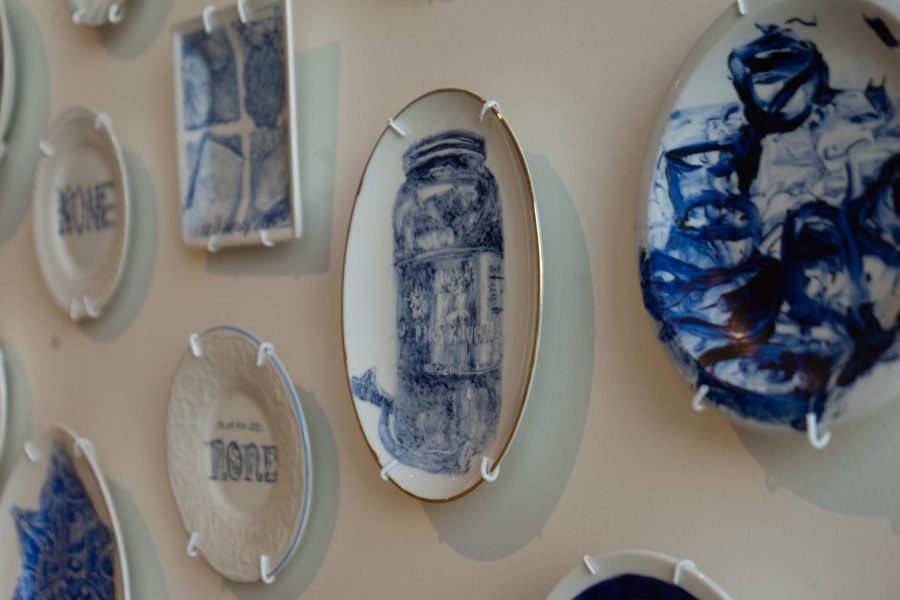Corvallis Museum holds exhibition by the late Julie Green
Part of “The Last Supper: Final Plates” exhibit by the late Julie Green at the Corvallis Museum in Corvallis, Ore. The exhibit honors Green’s work, who was a professor at OSU and respected artist.
April 4, 2022
In its first temporary art exhibit, the Corvallis Museum hosts the final 200 plates of Julie Green’s “The Last Supper,” which was donated by the Last Supper Trust and will be viewable until July 3.
Green, who was a professor at Oregon State University for 20 years and a respected artist, passed away in October 2021 due to ovarian cancer.
One of their biggest projects, “The Last Supper,” features second-hand ceramic plates painted with the last meals of inmates on death row, along with the date of their execution and the state where it occurred. Through their work, Green brought attention to the history of capital punishment in the United States.
Green was originally inspired by reading about the final meals of inmates in an Oklahoma newspaper. In their artist statement, Green said Oklahoma has higher per capita executions than Texas, though final meals in Texas are more highly publicized, highlighting the prevalence of death row in states that are not as publicized.
According to the Death Penalty Information Center, which Green originally referenced in February 2021 in their artist statement, at that time, more than 1,500 inmates have been executed in the U.S. since 1976, with 112 of those being in Oklahoma.
Over their lifetime, Green painted about 950 plates with cobalt-blue mineral paint representing the final meal requests of inmates from 36 states. Information about the last meals was obtained through newspapers, prisons and books. According to their artist statement, Green hoped to “end the series when we abolish capital punishment, or at 1,000 plates, which ever happens first.”
Almost 1000 plates later, capital punishment and the death penalty have been abolished in 23 states as well as the District of Columbia.
“Why do we have this tradition of final meals, I wondered, after seeing a request for six tacos, six glazed donuts and a cherry Coke,” Green wrote in their artist’s statement. “Twenty-one years later, I still wonder.”
“Julie Green was committed to this art project/social justice commentary for over 20 years,” said Mark Tolonen, the curator of exhibitions for the Benton County Historical Society. “Julie is gone, but their work continues to inspire reflection, conversations and maybe one day, legislation.”
“We were approached by the gallery that has represented Julie Green in the past; they really wanted to see Julie’s final works shown in Corvallis, as did their husband,” said Jessica Hougen, executive director of the Benton County Historical Society.
After serving the Corvallis community for so long, the gallery wanted to show Green’s work in the city they h develop.
Green’s work has been shown on National Public Radio, The New York Times and at a few other galleries, including the Bellevue Arts Museum in Washington. Their work has not been shown by either of the museums operated by Benton County Historical Society before, but has been featured in other locations around Corvallis.
This exhibition will be the first, but not last, temporary art installation at the Corvallis Museum, according to Hougen. Prior to this exhibit, the Corvallis Museum featured permanent exhibits that were centered around local history as it is operated by the Benton County Historical Society.
“We have always felt that art is an integral part of the community and indeed has a place in community history,” Hougen said.
The Corvallis Museum is located at 411 SW Second St. and is open Wednesday through Saturday from 10 a.m. to 4:30 p.m. and from noon to 4:30 p.m. on Sundays.
Admission to the museum is always free for Benton County Historical Society Members, youth 18 and under, as well as OSU and Linn-Benton Community College students. Valid ID is required for students seeking free admission.










































































































